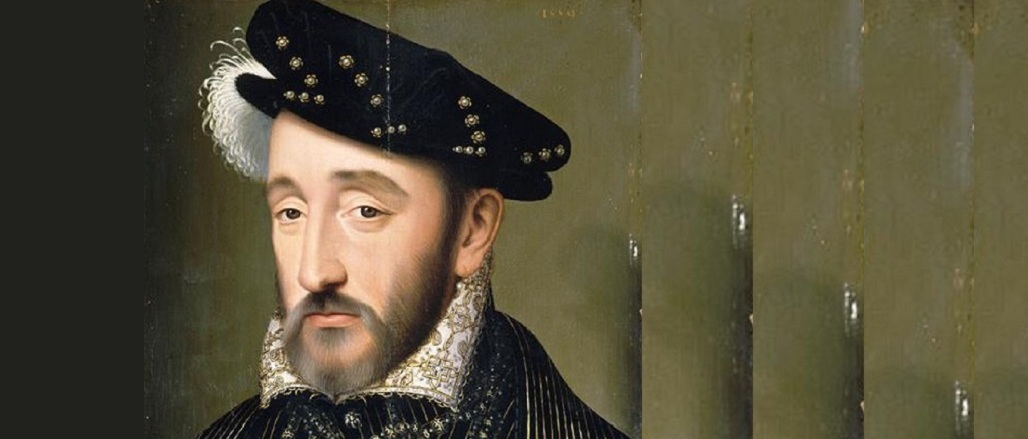Henry II of France
Posted on 30th January 2021
Henry was born on 31 March 1519 in the Chateau de Saint Germain-en-Laye (Royal Palace) near Paris to parents King Francis I of France and Claude, Duchess of Brittany.
His father was imprisoned in Spain following the Battle of Pavia in 1525, and only obtained his own release by placing Henry and his older brother in his place, and they were to spend over four years in captivity in Spain.
On 28 October 1533, fourteen year-old Henry married Catherine de Medici, though his passion was to lie elsewhere; when he was fifteen he started an affair with Diane de Poitier, twenty years his senior, and this affair would last throughout his life.
Poitier was only his mistress but she held great influence over Henry even involving herself in political decisions and signing royal documents. His wife Catherine held no influence over him at all, her only purpose was to produce heirs, yet it was ten years until she produced her first child.
In 1536 Henry’s elder brother Francis III, Duke of Brittany died, making Henry heir apparent to the throne. His father died on Henry’s 28th birthday, 31 March 1547, making him King Henry II of France. He was crowned on 25 July 1547 at Reims Cathedral.
Henry was severe in his persecution of Protestants (Huguenots), even burning them at the stake or cutting out their tongues, even suspicion of being a Huguenot could result in imprisonment. In 1551 he proclaimed the Edict of Chateaubriant, severely restricting Huguenots.
In 1551 Henry declared war against Holy Roman Emperor Charles V, hoping to recapture Italy. This resulted in the Eighth Italian War (Habsburg-Valois War) of 1551 – 1559. In 1552, he signed the Treaty of Chambord, allying himself with German Protestant princes; a very hypocritical decision for someone who persecuted Protestants so badly in his own country.
Henry was successful at the Battle of Renty in 1554, but defeated at the Battle of Marciano later the same year when trying to invade Tuscany.
Following the abdication of Holy Roman Emperor Charles V in 1556, Henry fought but was defeated at the Battle of St Quentin in 1557 by Philip II of Spain. After this, he was forced to renounce any further claims to Italian territories when he signed the Peace of Cateau-Cambresis with Elizabeth I of England and Philip II of Spain in April 1559.
At a jousting tournament on 30 June 1559 to celebrate the Peace of Cateau-Cambresis, Henry while competing was wounded in the eye by a lance and later died of Septicaemia on 10 July 1559. He was buried at the Basilica of St Denis, near Paris.
While on his deathbed he repeatedly asked to see his long-term mistress Diane de Poitiers, but his wife Catherine de Medici refused her access to him.
Henry was succeeded by his fifteen year-old son Francis, who at the age of fourteen in April 1558 had married Mary, Queen of Scots, ultimately giving France the throne of Scotland and a claim to the throne of England, however he was to die aged sixteen in December 1560 and was succeeded by his ten year-old brother, who became Charles IX.
Tagged as: Junior Tudors
Share this post:





